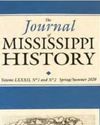The 1876 Centennial International Exhibition was a boon to Mississippi’s timber industry.

Fourteen decades, and one year-ago America celebrated its one-hundredth anniversary of the signing of the Declaration of Independence. This extravaganza, the first of its kind in the United States, was titled the Centennial International Exhibition and was held in Philadelphia, Pennsylvania. Every week from May 10, until November 10 1876, the 285-acre exhibition amazed visitors.
As our nation’s first official world’s fair, it was impressive to all walks of life. There were 250 buildings connected by seven miles of manicured avenues and floral-edged walkways, and the five central buildings alone covered more than 50 acres. The main exhibition hall, patterned after the 1851 Great Crystal Palace in London, enclosed 21.5 acres under one roof, making it the largest building in the world. In this pre-electric era, sunlight penetrating thousands of clear glass panels lit the enormous structure, and numerous indoor water fountains kept guests cool.
Almost 10-million visitors, twenty percent of our nation’s population at the time, paid 50 cents each to attend. Twenty six of our 38 states erected buildings. These were complemented by 37 other buildings, each called “pavilions,” built and paid for by foreign countries. As notable as the visiting nations’ pavilions were, it was the individual states’ structures that were applauded for their ability to display resources and inventiveness.
This story is from the September-October 2017 edition of Mississippi Magazine.
Start your 7-day Magzter GOLD free trial to access thousands of curated premium stories, and 8,500+ magazines and newspapers.
Already a subscriber ? Sign In
This story is from the September-October 2017 edition of Mississippi Magazine.
Start your 7-day Magzter GOLD free trial to access thousands of curated premium stories, and 8,500+ magazines and newspapers.
Already a subscriber? Sign In

Centenary college
In the woods of rural Rankin County lies the history of Mississippi’s first medical college.

Four pounds of fortuitous timing
The cheesecake with a story good enough to eat

Oxford's dirty business
A gas station-turned-plant shop is a perfect spot for an OIL change.

Secret garden
A walled and plant-filled courtyard is a private sanctuary for a Madison couple.

The Home Team
Old friends join forces to breathe life into a historic home on HGTV’s hit television series “Home Town.”

On the waterfront
A Jackson home takes full advantage of its lakeside location, swans and all.

Nourishing a community
Jerry Thompson’s heart and love of gardening combine to feed Tupelo children.

Climbing to the top
The Hattiesburg Zoo offers high views and fun times with animals.

CHICKEN COME HOME TO ROOST
Quarantine ignites a need for eggs and a home for feathered friends.

A heart for horses
Mississippi Horse Rescue offers a safe place for at-risk equines.